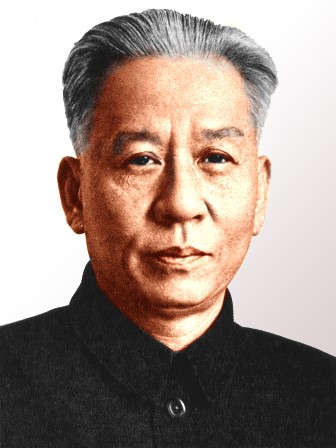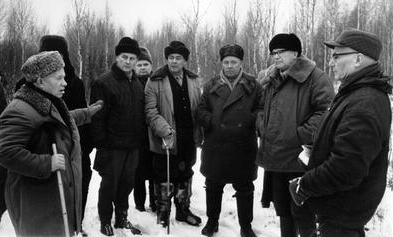|
Bourgeois Nationalism
In Marxist theory, bourgeois nationalism is the ideology of the ruling capitalist class which aims to overcome class antagonism between proletariat and bourgeoisie by appealing to national unity. It is seen as a distraction from engaging in class struggle and an attempt to impose interests of capitalists on the proletariat by constructing capitalist interests as "national interests". Internationally, it aims to create antagonism between workers of different nations and serves as a divide-and-conquer strategy. The bourgeois nationalism is contrasted with left-wing nationalism and proletarian internationalism. Usage Soviet Union After the October Revolution, the Bolshevik government based its nationalities policy ( korenization) on the principles of Marxism. According to these principles, all nations should disappear with time, and nationalism was considered a bourgeois ideology. By the mid-1930s these policies were replaced with more extreme assimilationist and Russificat ... [...More Info...] [...Related Items...] OR: [Wikipedia] [Google] [Baidu] |
Marxism
Marxism is a political philosophy and method of socioeconomic analysis. It uses a dialectical and materialist interpretation of historical development, better known as historical materialism, to analyse class relations, social conflict, and social transformation. Marxism originates from the works of 19th-century German philosophers Karl Marx and Friedrich Engels. Marxism has developed over time into various branches and schools of thought, and as a result, there is no single, definitive " Marxist theory". Marxism has had a profound effect in shaping the modern world, with various left-wing and far-left political movements taking inspiration from it in varying local contexts. In addition to the various schools of thought, which emphasize or modify elements of classical Marxism, several Marxian concepts have been incorporated into an array of social theories. This has led to widely varying conclusions. Alongside Marx's critique of political economy, the defining cha ... [...More Info...] [...Related Items...] OR: [Wikipedia] [Google] [Baidu] |
Sovietization
Sovietization ( ) is the adoption of a political system based on the model of soviets (workers' councils) or the adoption of a way of life, mentality, and culture modeled after the Soviet Union. A notable wave of Sovietization (in the second meaning) occurred during the Russian Civil War in the territories captured by the Red Army. Later, the territories occupied by the Russian SFSR and the USSR were Sovietized. Mongolia was conquered by the Soviet Union and Sovietized in the 1920s, and after the end of the Second World War, Sovietization took place in the countries of the Soviet Bloc ( Eastern and Central Europe: Czechoslovakia, East Germany, Hungary, Poland, the Baltic states, etc.). In a broad sense, it included the creation of Soviet-style authorities, new elections held by Bolshevik party members with opposition parties being restricted, the nationalization of private land and property, and the repression against representatives of " class enemies" (kulaks, or '' osadniks'' ... [...More Info...] [...Related Items...] OR: [Wikipedia] [Google] [Baidu] |
American Imperialism
U.S. imperialism or American imperialism is the expansion of political, economic, cultural, media, and military influence beyond the boundaries of the United States. Depending on the commentator, it may include imperialism through outright military conquest; military protection; gunboat diplomacy; unequal treaties; subsidization of preferred factions; United States involvement in regime change, regime change; economic or diplomatic support; or economic penetration through private companies, potentially followed by Interventionism (politics), diplomatic or forceful intervention when those interests are threatened. The policies perpetuating American imperialism and expansionism are usually considered to have begun with "New Imperialism" in the late 19th century, though some consider American territorial expansion and settler colonialism at the expense of Indigenous peoples, Indigenous Americans to be similar enough in nature to be identified with the same term. While the United ... [...More Info...] [...Related Items...] OR: [Wikipedia] [Google] [Baidu] |
Liu Shaoqi
Liu Shaoqi ( ; 24 November 189812 November 1969) was a Chinese revolutionary and politician. He was the chairman of the Standing Committee of the National People's Congress from 1954 to 1959, first-ranking Vice Chairman of the Chinese Communist Party, vice chairman of the Chinese Communist Party from 1956 to 1966, and the President of the People's Republic of China, chairman of the People's Republic of China (president of China) from 1959 to 1968. He was considered to be a possible successor to Chairman of the Chinese Communist Party, Chairman Mao Zedong, but was purged during the Cultural Revolution. In his early years, Liu participated in labor movements in strikes, including the May Thirtieth Movement. After the Chinese Civil War began in 1927, he was assigned by the CCP to work in Shanghai and Northeast China, and travelled to the Jiangxi Soviet in 1932. He participated in the Long March, and was appointed as the Party Secretary in North China in 1936 to lead anti-Japanese ... [...More Info...] [...Related Items...] OR: [Wikipedia] [Google] [Baidu] |
Kazakh Nationalism
Kazakh, Qazaq or Kazakhstani may refer to someone or something related to Kazakhstan: *Kazakhs, an ethnic group *Kazakh language * Kazakh alphabets, Alphabets used to write the Kazakh language * Kazakh Braille, Braille alphabet of the Kazakh language * Kazakh Short U, Cyrillic letter used for Kazakh * Kazakh clothing, Clothing worn by the Kazakh people Culture * Kazakh art * Kazakh cuisine * Kazakh literature * Kazakh wine, Wine making in Kazakhstan * Kazakh Khanate – Golden Throne, 2019 film Places * Kazakh forest steppe *Qazakh Rayon, Azerbaijan * Qazax, Azerbaijan * Kazakh Uyezd, administrative district of Elisabethpol Governorate during Russian rule in Azerbaijan * Khazak, Iran, a village in Fars Province, Iran Other uses * Kazakh Khanate, 1465–1847 Turkic state in Central Asia * Kazakh sultanate, Former state in the Caucasus * Kazakh horse, Horse breed developed by the Kazakh peoples of Asia * Kazakh famine of 1930–1933, 1931–1933 Holodomor that affected Sov ... [...More Info...] [...Related Items...] OR: [Wikipedia] [Google] [Baidu] |
Armenian Nationalism
Armenian nationalism in the modern period has its roots in the romantic nationalism of Mikayel Chamchian (1738–1823) and generally defined as the creation of a free, independent and united Armenia formulated as the Armenian Cause ( ). Armenian national awakening developed in the 1880s in the context of the general rise of nationalism under the Ottoman Empire. The Russian Armenia followed with significant causes. The Armenian Apostolic Church has been a great defender of Armenian nationalism, with leaders like Khrimian Hayrik who devoted his life to the peasantry. The establishment of modern Armenia (1991) and Armenian social fabric becoming more complex gradually decrease the political influence of Hye Dat and shifted towards a modern Armenian nationalism modeled as a liberal nationalism. National awakening The situation of the non-Muslim minorities within the Ottoman Empire changed substantially as a result of reforms introduced during the Tanzimat era. The early refo ... [...More Info...] [...Related Items...] OR: [Wikipedia] [Google] [Baidu] |
Latvian Nationalism
Latvian may refer to: *Something of, from, or related to Latvia **Latvians, a Baltic ethnic group, native to what is modern-day Latvia and the immediate geographical region **Latvian language, also referred to as Lettish **Latvian cuisine **Latvian culture **Latvian horse *Latvian Gambit, an opening in chess See also *Latvia (other) Latvia is a country in Europe. Latvia can also refer to: * Latvian Soviet Socialist Republic (1940–1990) * Latvia (European Parliament constituency) * 1284 Latvia - asteroid * Latvia Peak - mountain in Tajikistan Tajikistan, officially the ... * {{disambiguation Language and nationality disambiguation pages ... [...More Info...] [...Related Items...] OR: [Wikipedia] [Google] [Baidu] |
Estonian Nationalism
Estonian nationalism refers to the ideological movement for attaining and maintaining identity, unity, freedom and independence on behalf of the Estonian people, having one Estonian homeland – Estonia, sharing the common Estonian culture, as well as ancestral myths and memories, a common economy and common legal rights and duties for all members. Emergence of Estonian national identity in the 19th century Estonian nationalism emerged in the first half of the 19th century, in large part a result of the activities of the Estophile movement of the late 18th to early 19th century, when local Baltic German scholars, influenced by the European Enlightenment, began documenting and promoting the culture and the language of Estonian farmers. Early Estonian nationalism grew into a strong popular movement and a distinct Estonian national identity began to emerge in the mid-19th century as a result of the " Estonian national awakening" and the people's rapidly increasing access to Est ... [...More Info...] [...Related Items...] OR: [Wikipedia] [Google] [Baidu] |
Ukrainian Nationalism
Ukrainian nationalism (, ) is the promotion of the unity of Ukrainians as a people and the promotion of the identity of Ukraine as a nation state. The origins of modern Ukrainian nationalism emerge during the Khmelnytsky Uprising, Cossack uprising against the Polish–Lithuanian Commonwealth led by Bohdan Khmelnytsky in the mid-17th century. Ukrainian nationalism draws upon a single national identity of culture, ethnicity, geographic location, language, politics (or the government), religion, traditions and belief in a shared singular history. History Nationalism emerged after the French Revolution while modern day Ukraine faced external pressure from the suzerainty of the Polish–Lithuanian Commonwealth, the Tsardom of Russia and the Ottoman Empire. Zaporozhian Cossacks The Cossacks played a strong role in solidifying Ukrainian identity during the Polish–Lithuanian Commonwealth. The Zaporozhian Cossacks lived on the Pontic–Caspian steppe below the Dnieper Rapids (Ukr ... [...More Info...] [...Related Items...] OR: [Wikipedia] [Google] [Baidu] |
Leonid Brezhnev
Leonid Ilyich Brezhnev (19 December 190610 November 1982) was a Soviet politician who served as the General Secretary of the Communist Party of the Soviet Union from 1964 until Death and state funeral of Leonid Brezhnev, his death in 1982 as well as the fourth List of heads of state of the Soviet Union, chairman of the Presidium of the Supreme Soviet (head of state) from 1960 to 1964 and again from 1977 to 1982. His 18-year term as General Secretary was second only to Joseph Stalin's in duration. Brezhnev was born to a working-class family in Kamianske, Kamenskoye (now Kamianske, Ukraine) within the Yekaterinoslav Governorate of the Russian Empire. After the results of the October Revolution were finalized with the creation of the Soviet Union, Brezhnev joined the Communist party's youth league in 1923 before becoming an official party member in 1929. When Operation Barbarossa, Nazi Germany invaded the Soviet Union in June 1941, he joined the Red Army as a Political commissar, ... [...More Info...] [...Related Items...] OR: [Wikipedia] [Google] [Baidu] |
Soviet Union
The Union of Soviet Socialist Republics. (USSR), commonly known as the Soviet Union, was a List of former transcontinental countries#Since 1700, transcontinental country that spanned much of Eurasia from 1922 until Dissolution of the Soviet Union, it dissolved in 1991. During its existence, it was the list of countries and dependencies by area, largest country by area, extending across Time in Russia, eleven time zones and sharing Geography of the Soviet Union#Borders and neighbors, borders with twelve countries, and the List of countries and dependencies by population, third-most populous country. An overall successor to the Russian Empire, it was nominally organized as a federal union of Republics of the Soviet Union, national republics, the largest and most populous of which was the Russian SFSR. In practice, Government of the Soviet Union, its government and Economy of the Soviet Union, economy were Soviet-type economic planning, highly centralized. As a one-party state go ... [...More Info...] [...Related Items...] OR: [Wikipedia] [Google] [Baidu] |





